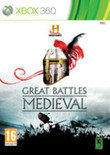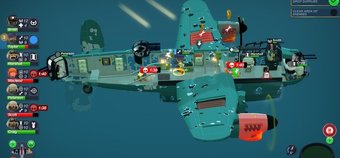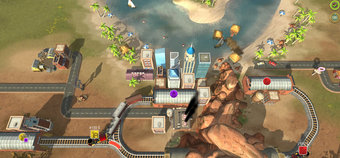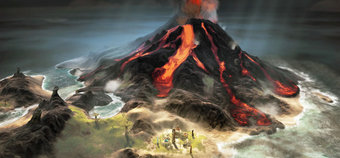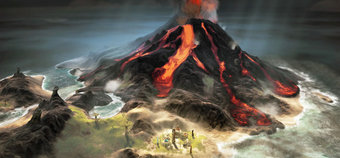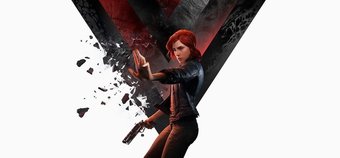When I was growing up, I always had a huge interest in medieval history. The romanticised image of knights in shining armour riding on horseback to save the day, in a world of castles, kings, and courtyards was one I'd often lose myself in, with Horrible Histories books helping to fuel my interest. Then I took a GCSE in History, and ended up struggling to keep myself awake as we learnt about such thrilling topics as agriculture, and four course crop rotation.
Thankfully, with its History Channel branding, History: Great Battles Medieval is a game based around a much more exciting period of history. Based around the hundred years war, not the battle Farmer Joe had with a particularly nasty clod in his field, this complex strategy game has you taking control of either the French or English armies, as they bare arms against each other in what can realistically be called an epic conflict.

Once more, unto the breach, dear friends!
More than simply featuring the branding of the History Channel, each mission you play is introduced with footage taken from the channel itself. But while this was a great opportunity to provide some backdrop to each mission, the footage is so brief, if you don't have much of an idea of the events of the war, you're often left none the wiser after watching it. It's a missed opportunity, and one that particularly grates with us, because we were looking forward to learning about the historical aspect of it.
Thankfully, the actual gameplay is a lot better. Moving around a map of the south of the UK and France, you'll play through a set of 26 battles, ranging from small skirmishes, to huge, thousand man war. Rather than having to manage each unit separately, your soldiers are divided into units, or battalions of tens of soldiers of the same kind, making moving your armies around the field fairly straightforward.
Neither real time nor turn based, History Great Battles Medieval's gameplay is an interesting mix of the two, with the battles playing out in real time, until you press a button, and the game pauses, giving you all the time in the world to check on the status of your units, and think about what to do next. Once you've shuffled your units around, and changed their priorities, hitting X will start the battle going again until you next decide to change your moves. Perhaps the biggest problem with this set up is it's impossible to tell how your units are doing when the battle's in progress. You can check on their morale, but you won't be able to keep track of how many units they've lost when the battles in progress, making pausing frequently a must.

The colour of the flags indicate how close that unit is to giving in and legging it. White means they've already packed their bags.
The battles work a lot like a medieval game of Rock, Paper, Scissors, with archers being strong against units without shields, and units with large shields being a bit rubbish in up close battle. The best way to defeat an enemy battalion quickly is to use a combination of archers and foot soldiers, but again, different melee weapons are effective against different troops. It's an interesting concept, but it's one that's not explained very well, with no list of strengths vs weaknesses to peruse to check your strategies. Then again, Pokemon didn't give you a list either, but knowing that fire melts ice doesn't require an intricate knowledge of medieval weaponry and warfare.
It's a thinking person's game, to say the least, and trying to outwit, outflank, and not simply outgun (or sword) your enemy is the order of the day here. You'll find yourself pausing the game every few seconds, as you try to better manoeuvre your units, closing down on the French, as you attempt to surround them from all sides. Morale plays a strong part in battle, with troops confidence being badly affected when they're surrounded, outnumbered, or losing troops. Play your cards right, and the cheese eating surrender monkeys may live up to their stereotypes.

The Duke of Clarence. It's a shame you can't rename your units.
The more you use your units (and the better you use them), the stronger they'll get, with experience, and gold being awarded at the end of every battle. By going to an army screen, you can change your troops' equipment, and even buy them special abilities, helping to give them the upper hand in battle. Having a well equipped, and well trained army is as much of a key to victory as anything else.
Perhaps most disappointing, however, is how rough the game feels at times. For starters, the text is disappointingly tiny, and we had trouble reading it sitting a few foot away from a 32" TV. If you sit far enough away from your TV that you can play Kinect, you won't stand a chance of reading this. More worrying, however, is just how difficult the game is. It's less of a learning curve, and more of a learning cliff, as the battles very quickly get very hard. Luckily, scattered around the map are a number of sub-missions, that range from defending a town, to crushing a peasant uprising, or protecting a wagon as it trundles through the countryside - and while some of these can be fiendishly hard to begin with, they're all replayable, so you can level your troops, and equip them with better weaponry, ready to fight again another day.
While the title certainly has a lot of potential, it's sadly fairly untapped. What remains is a fairly solid, if rather inaccessible, strategy game that could have done with being a bit more streamlined to make it a little more user friendly. It's an impressive base to build on though, and we're already hoping it sells enough to warrant a sequel. If they make the changes we suggest, they could be on to something special.
Format Reviewed: Xbox 360


